In the post-war period, art individuals began to challenge art norms and the controlled traditional art gestures. Informel is an art movement from the 1940s to 1950s first started in France. It purses the spontaneity and freedom in art expression and experiments with surrealistic approach. Toshimitsu Imai and Hisao Domoto, who at that time based in France, are the Japanese members of the art group. Imai, known for his use of organic colors and explosive brushworks, retains the Japanese aesthetic in his works that captures nature and art in tandem. Domoto garnered much attention due to his Abstractionist flair using thick oil paint with swirling dynamic forms in composition and intuitive properties. The two artists brought the idea of Informel to Japan in 1953 which created the Informel whirlwind that was to take over in the Japanese art scene. This also underpinned the rise of Gutai.


Whirlwind: Informel to Gutai
HONG KONG / H Queen’s
July 9 - Aug 27, 2022
INTRODUCTION
Whitestone Gallery Hong Kong is proud to present the group exhibition “Whirlwind: Informel to Gutai”, featuring the significant names in the trajectory of Japanese contemporary art, including Toshimitsu Imai, Hisao Domoto, Atsuko Tanaka and Yuko Nasaka. The exhibition showcases a rich selection of artworks that defines the era of liberation and pioneer art approach of the post-war period. These artists questioned the conventional rules and embraced individuality, bringing a new wind to the history of contemporary art.


Exhibition Tour by CUSSON CHENG

Toshimitsu Imai
Amid the post-war turmoil, Imai Toshimitsu travelled alone to Paris in 1952 and became involved in the 'Art Informel' movement led by Michel Tapié. Imai returned to Japan temporarily in 1957 and together with Tapié, Georges Mathieu and Sam Francis, they created the Informel whirlwind that was to take over in the Japanese art scene.
The Informel sought to overturn European aesthetic norms which had a profound effect on Japanese art as it had been constantly imitating Western art. During this time, Imai's focus on Japan gave him a clear sense of the traditional Japanese sensibilities that underpinned his work as a means of breaking through European stereotypes. He was very conscious of his roots which led him to emerge through the deadlock of Western art that had become "disconnected" from "life" by incorporating Japanese aesthetic that captures nature and art in tandem.



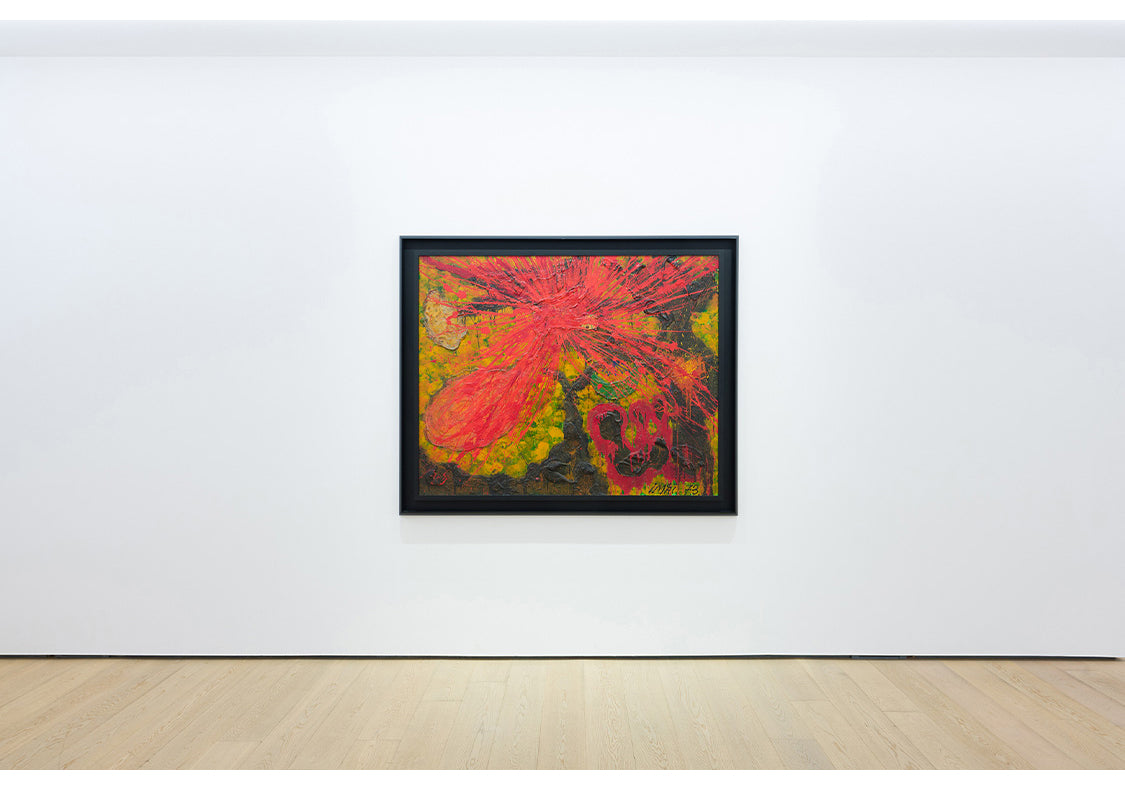


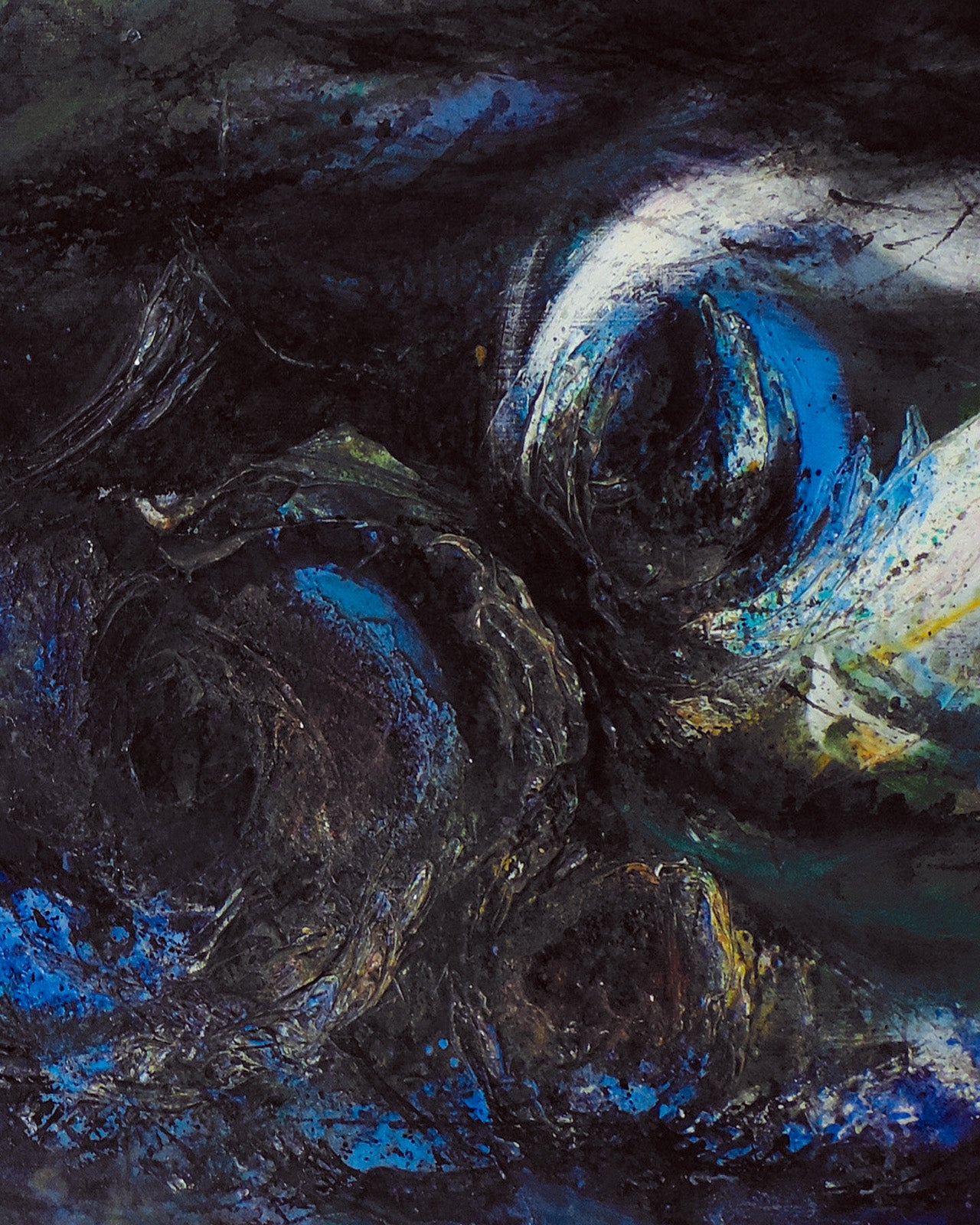
Hisao Domoto
Having studied at the Department of Japanese Painting at Kyoto City University of Arts, Hisao Domoto accompanied his uncle lnsho Domoto on his trip to Europe in 1952. During their stay Hisao decided to study in Paris. After moving to Paris, Hisao Domoto started painting in oil, and made friends with fellow Japanese artists, Toshimitsu l and Kumi Sugai. ln 1956, having devoted himself to the Art Informel (informal art) movement led by Michel Tapié, Domoto produced a new type of paintings, which consist of thick layers of oil paint and vibrant swirling for He gained fame for these works, and was recognized as one of the leading artists of the Art Informel movement that aimed to create informal abstract xpression. At the same time, he introduced Japan's Gutai Art" to Tapié. In 1962, Dom decided to take a separate path from Tapié to find a new expression of his own. His artistic pursuits developed into the Ensembles Binaires series, which are composed of repetitive splashes and drips of paint, and the Solution of Continuity series, which have more emphasis on materiality. These works were highly praised as an expression that distinguishes the possibility of abstract paintings in the post Art Informel era. From late 1960s to his later years in 2000s, Domoto's style of expression changed further. He continuously produced experimental paintings, such as paintings composed of circles and waves that are repeatedly crossing each other, dreamlike color paintings, and the Between Unconsciousness and Consciousness series that were painted with automatism technique using blurring effects. The expression methods he used in his later years give an impression that he was returning to his origin, as they seem to encompass the essence of Japanese paintings that Domoto learned and cultivated when he was young.

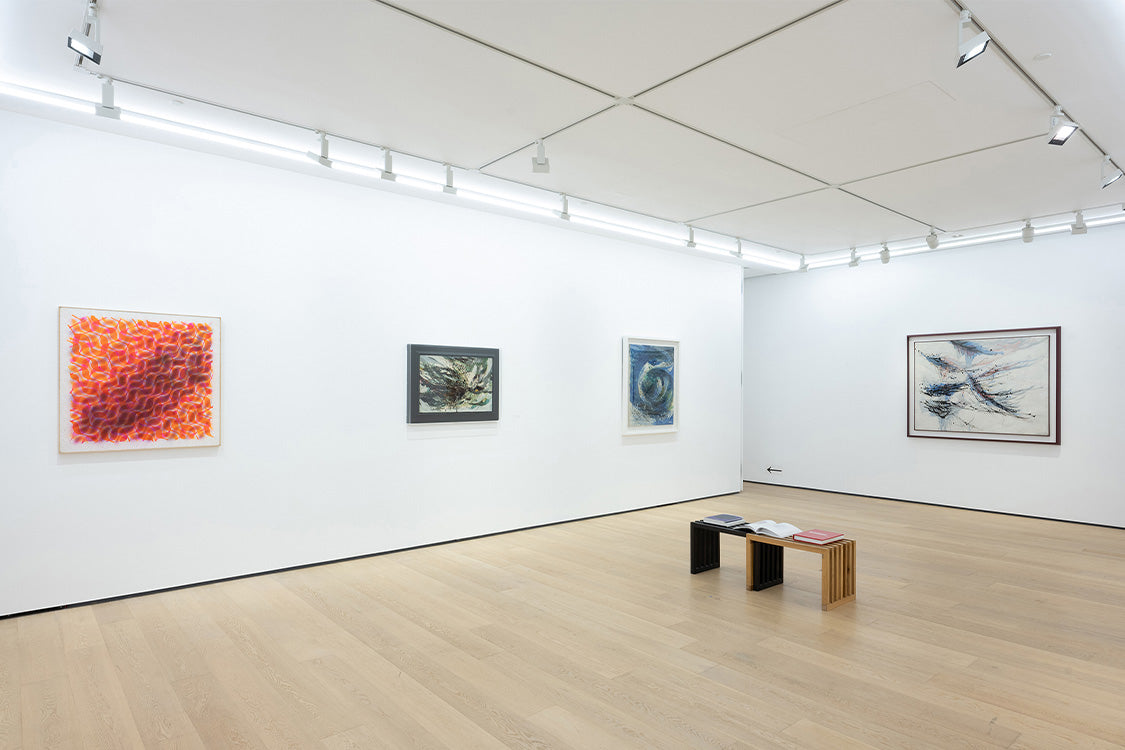



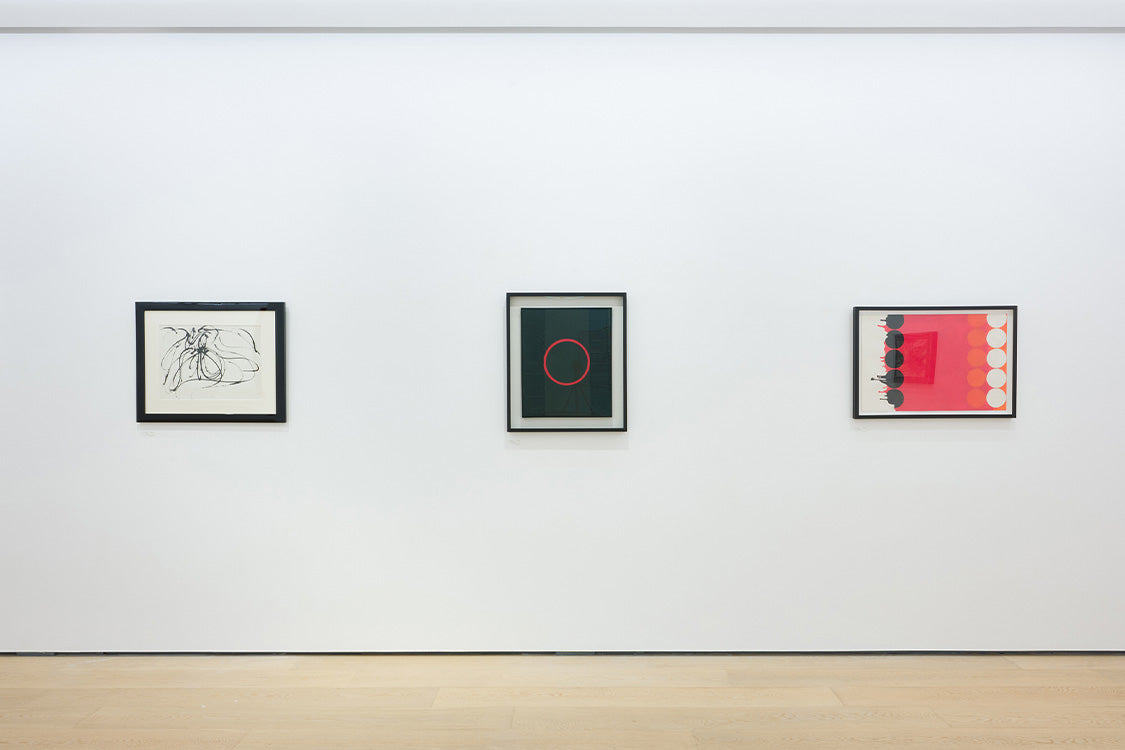
Founded in 1954, with the aim to go beyond abstraction and pursue enthusiastically the possibilities of pure creativity, Gutai Art Association emphasized that Gutai art does not alter matter but rather speaks of the delicate interaction between spirit and matter that ultimately enables art to tell a story. The name “Gutai” was meant to “present concrete proof that our spirit is free.” In the exhibition, artworks of the two female Gutai members, Atsuko Tanaka and Yuko Nasaka would be presented. Their admission to the association reflected its gender awareness which confronted the gender subjectivity and low status of female artists at that time. Tanaka took inspiration from electrical diagram, where uncounted circles are intertwined with lines. She uses consistently synthetic resin enamel as mediums. With its glossy matiéres and vivid colors, her creation shows outstanding presence. Nasaka continuously experimented with materials, texture and color through her constant circle paintings. Conveying infinity, circle becomes her lifelong motif for creation.

Atsuko Tanaka
Tanaka joins in Gutai Art Association since 1955. With her “electric dress”, which is composed of bulbs with synthetic enamel paints, presented in Gutai Art on the Stage(1956), Tanaka enters the limelight. She gets this idea from electrical diagram, where uncounted circles are intertwined with lines. Tanaka uses consistently synthetic resin enamel as mediums. With its glossy matiéres and vivid colors, her creation shows outstanding presence. Tanaka is considered one of the represented figures of early period of GUTAI like Kazuo Shiraga and Sadamasa Motonaga. Tanaka’s works are included in many exhibitions in USA and Europe.
Around 1957, when TANAKA started using more stable materials, such as permanent markers and vinyl paint, her first group of paintings emerged. Circular forms and lines, previously the pared-down symbols for lightbulbs and electric circuitry, assumed a more autonomous character and began to function as a language for abstract painting. The two simple geometric forms proved to be an extremely fertile ground that the artist would develop in the four decades that followed. Within the complicated structure formed by circles and lines in TANAKA's painting, it is almost impossible to tell where the beginning and the end are. TANAKA simplified the universe into circles, lines and colours. Her painting process forms a harmonious and balanced complexity through the use of essential elements. Her creation process is both a cycle of simplification and complexification, the ongoing process of reducing to essence in order to understand life in a world full of chaos and dissonance.

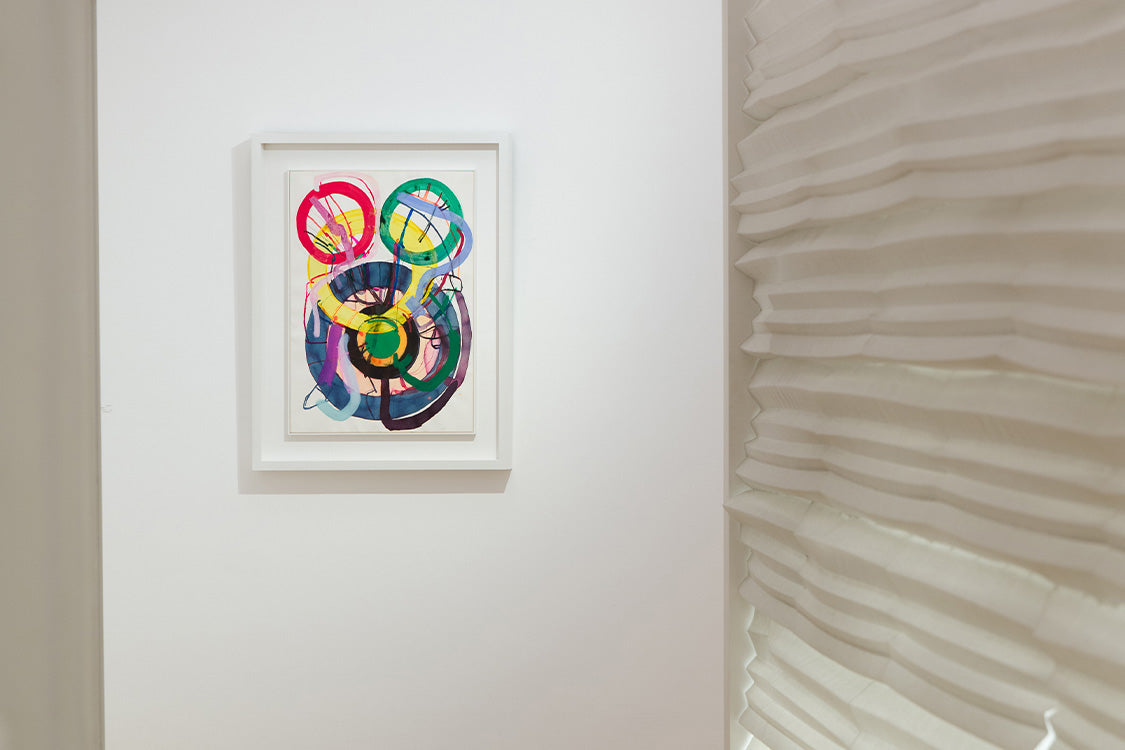



Yuko Nasaka
Born in Osaka in 1938, Yuko Nasaka began making art at an early age. In junior high school, she had discovered a range of Western art, began painting figurative work in oil and towards the end of school years, she created abstract architectural works. While she was in Osaka Shoin Women's University, she submitted her work to the Nika exhibition (Second Section Society), where Gutai leader Jiro Yoshihara was a jury. Yoshihara encouraged Nasaka to join Gutai in 1963.
In the beginning of the 1960's, Nasaka made the works by drilling the numerous holes from the back of cardboard sheets. Her work with holes was awarded the Mayor's prize at the 15th Ashiya City Exhibition. In 1964, Nasaka held a solo exhibition at Gutai Pinacotheca, where she interacted with the American artists Paul Jenkins, John Cage, Merce Cunningham, Jasper Johns and Robert Rauschenberg. Later, Naska realized great possibilities from drawing circles and she was devoted to produce mysterious circles on square panels. These circle works are composed of plates relief-sculpted with palette knife into a material made of plaster and clay on a custom-made turning table. Then these panels are painted with resin and lacquer using an airbrush that makes similar effect of glazes on ceramics.
While Nasaka's process is partly inspired by industrial manufacturing, especially by her father's factory of meters, her work of plaster circles has a slightly different impression created by variations of reliefs and paint colors. When they are stacked one on top of another, an overwhelming repetition of these circles evoke the infinity and mysterious space.




July 9 - Aug 27, 2022
HONG KONG / H Queen’s
전화: +852 2523 8001
팩스: +852 2523 8005
영업시간: 11:00 - 19:00
휴무: 일요일, 월요일
